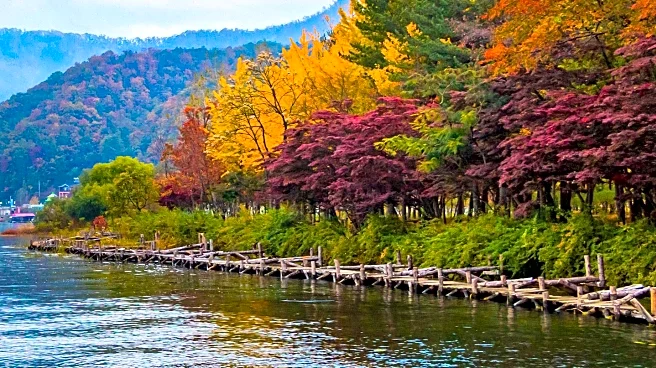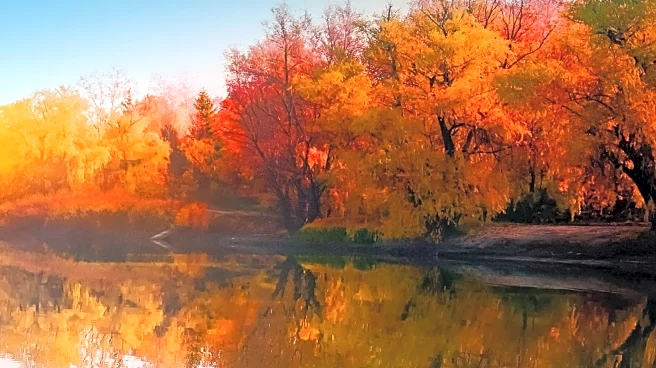What is the story about?
What's Happening?
As autumn approaches, the vibrant colors of fall foliage are set to appear across the United States. According to Brandon Fuller, a doctoral candidate at the University of North Carolina at Chapel Hill, fall foliage occurs when leaves change from green to yellow, orange, and red due to the storage of chlorophyll. John Seiler, a professor at Virginia Tech, notes that areas rich in tree diversity and elevation, such as the central and southern Appalachians, are ideal for viewing these colors. Popular activities during this season include scenic train rides, photography, and hiking. Fuller also mentions the use of fall foliage for natural dyes, highlighting the smooth sumac plant for its striking scarlet leaves.
Why It's Important?
The annual appearance of fall foliage is a significant cultural and environmental event in the U.S., attracting tourists and nature enthusiasts. It provides economic benefits to regions known for their vibrant displays, such as Vermont and the Great Smoky Mountains National Park. The changing colors also play a role in nutrient recycling, as fallen leaves decompose and enrich the soil. This natural process supports biodiversity by creating habitats for various organisms. Understanding the science behind fall foliage can enhance appreciation for these seasonal changes and encourage sustainable practices, such as leaving leaves in yards to support local ecosystems.
What's Next?
As fall progresses, the colors will become more prominent, particularly in the northeastern U.S. and areas with diverse tree species. People interested in experiencing the full spectrum of fall colors can use resources like interactive maps to plan their visits. Experts suggest exploring less-traveled roads and national forests for optimal viewing. Additionally, discussions around climate change and its impact on foliage timing continue, although current research indicates that day length, rather than weather patterns, primarily influences the timing of color changes.
Beyond the Headlines
The cultural significance of fall foliage extends beyond its visual appeal. It represents a time of reflection and transition, as nature prepares for winter dormancy. The use of natural dyes from leaves connects modern practices to historical traditions, offering sustainable alternatives to synthetic dyes. Furthermore, the encouragement to leave leaves in yards challenges conventional landscaping norms, promoting ecological benefits and fostering a deeper connection with nature.
AI Generated Content
Do you find this article useful?















